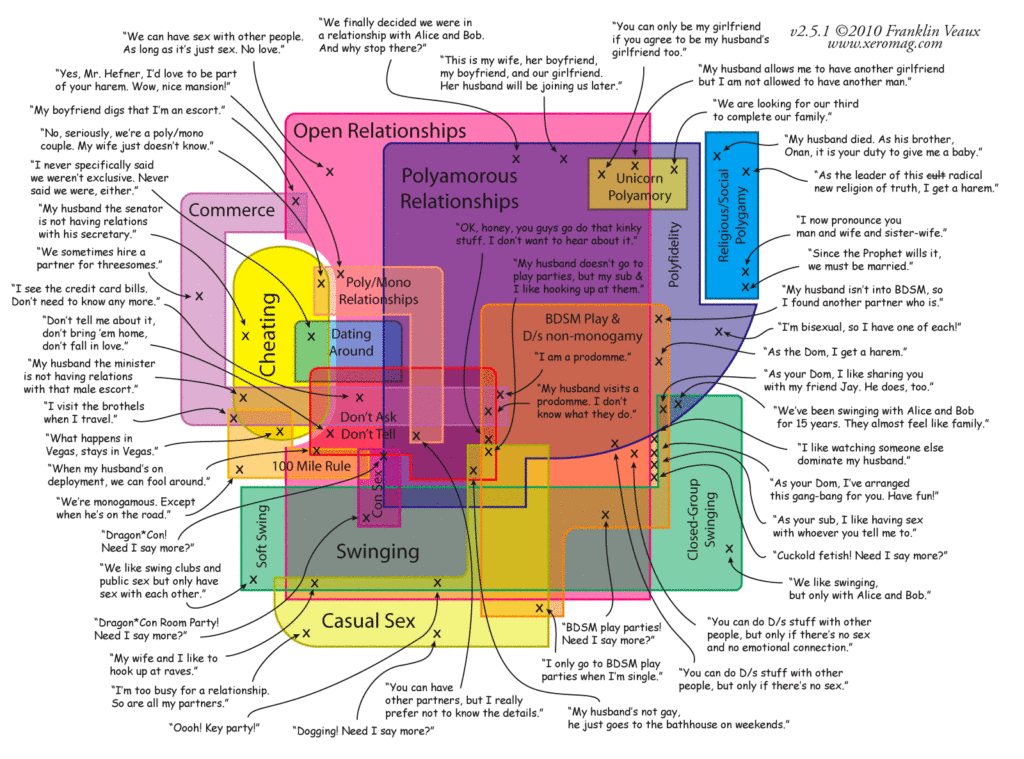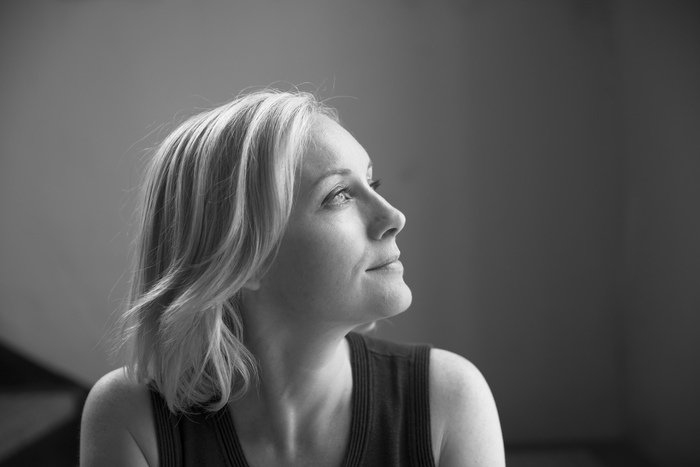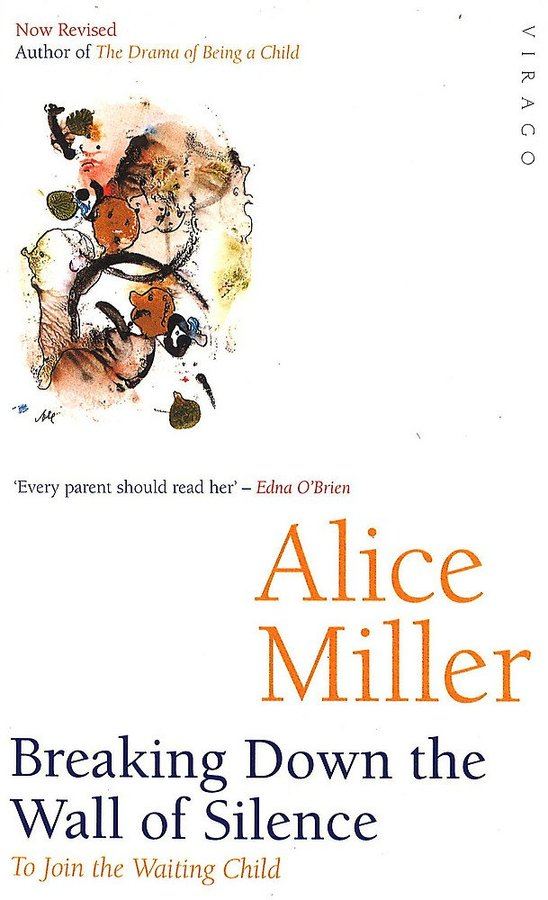Homo sapiens is a peculiar creature, influenced by many things beyond its biology. We live within an elaborate framework of cultural prescriptions, biological inclinations, historical traditions, psychological progress, and personal experiences. With so much variety, it is tempting to wonder what human beings are “naturally”. From an exquisitely scientific perspective, polygyny represents the most common form of relationship structure, with 850 of the 1170 societies recorded in Murdock’s Ethnographic Atlas being polygynous. According to David Barash and Judith Lipton, although for most part Homo sapiens is socially monogamous, biological evidence points towards a preference for polygyny in our recent evolutionary past. The two researchers did not forget to point out that, when conditions are ripe, men and women are equally eager to engage in what they describe as “avidly adulterous” behaviour – in other words, ‘sleeping around’ brought an evolutionary advantage to our species, and promiscuity has been embedded in our genes since. Similarly, a degree of “extra-pair copulation” is the norm and not the exception in an avalanche of birds and mammals long believed to be noble paragons of monogamy.
So what?
Although some people feel that their preference for a certain relationship framework is not a matter of choice, relationship orientations are not necessarily fixed. Some feel intrinsically monogamous, some feel sexually open but maintain a need for emotional exclusiveness, others feel intrinsically polyamorous – and polyamory itself comes in many flavours. Finally, some people seem to be able, under the right circumstances, to thrive in different relationship types.
Relationship frameworks form a continuum of options in which no choice is “inherently superior” to the others: there is no “ultimate relationship type” that people should strive towards. If anything, basic respect for universal human values suggests that the one non-negotiable choice criterion amongst relationship types should be their ethicality. In other words, in all our relationships we should strive to be honest, to be vocal about our evolving needs and desires, to understand that mistakes get made, and to extend the same treatment to our partners. Any arrangement that does not allow and require this way of acting is hardly sustainable and is likely to generate pain and abuse, even though only indirectly.
Finally, no matter the framework, each relationship does not operate in a vacuum. Just like the human beings that make them, relationships are evolving entities. As partners learn more about themselves and as their preferences change through life, their bond will change too – and not necessarily in the way one would want, despite one’s best efforts. The understanding that change is an integral part of relationships (irrespective of one’s desired narrative), that relationship preferences need to be discussed and assessed regularly (or at least on a need-be basis) and that, from a biological perspective, it is only natural for human beings to exhibit certain non-monogamous inclinations (whether we intend to approve of them or not in our current framework) makes a relationship conscious. The importance of relationship consciousness, both in developing authentic relationships founded on reality rather than on cultural fiction and in achieving an individual’s own life goals and personal happiness, cannot be overstated.
In this page, we have gathered some of the most widespread vocabulary on relationship frameworks. Our thanks go to a long list of authors, activists, scientists and thinkers who have deepened our understanding of human mating and bonding systems, and contributed to bringing a great many controversial ideas closer to the mainstream. Many of them appear in our library section, where you can find a curated selection of publications on several relationship topics. In particular, we would like to thank Franklin Veaux for the immense work of clarification and categorisation carried out over his multi-decennial career.

B
Body-fluid monogamy: the practice of limiting any activity involving the exchange of bodily fluids, in particular unprotected sexual intercourse, to only one partner.
C
Cellular family: A group of three or more adults (and optionally children) who live together or near one another, share responsibility for joint finances and/or domestic responsibilities, and consider themselves to be part of a single family.
Cheating: 1. the act of withholding information from a partner which one has agreed to disclose or that one knows they would want to know; 2. the breaking of a set of rules agreed beforehand with a partner, without prior discussion. <<In traditional monogamous relationships, any sexual activity with anyone outside that relationship is generally viewed as cheating. In a polyamorous or swinging relationship, sexual activity with people outside the relationship may or may not be seen as cheating, depending on the context of that sexual activity and whether or not it violates the agreements of the people in that relationship. Even in such relationships, sexual activity without the knowledge and explicit consent of the other members of the relationship is likely to be viewed as cheating.>> [Franklin Veaux]
Compersion: a feeling of joy when one’s partner invests in and takes pleasure from another romantic or sexual relationship. It can be thought of as the opposite of jealousy.
Condom contract: an agreement restricting barrier-free sexual contact to individuals in that relationship alone; it may also specify the conditions under which a member may exchange body fluids or engage in unprotected sex with a new partner.
Conscious relationship: any relationship based on a framework choice which was informed and deliberate, and which acknowledges openly that partners and relationship preferences may change over time.
Couple privilege: any advantage that one partner claims over another partner purely due to their being in a relationship. This often takes the form of a feeling of entitlement for more time and attention. In some cases, a partner will expect to have veto powers on who the other partner can or cannot be sexually intimate with or emotionally connected to.
D
Daisy chain: a polycule with no loops, that is, a chain of people dating one another in pairs.
Don’t Ask Don’t Tell (DADT): an agreement according to which one is permitted to have additional sexual or romantic relationships on the condition that their partner does not know anything about those additional relationships and does not meet any of those other people, unless explicitly requested.
E
Egalitarian polyamory: a relationship arrangement in which a person has multiple partners who are equal (or treated as equal) to one another in terms of interconnection, emotional intensity, or power within the relationship. This is often contraposed to hierarchical polyamory.
Emotional libertarianism: a belief that every individual is entirely responsible for his or her own emotional responses, and that one person’s behaviour is never the “cause” of another person’s emotion.
Ethical non-monogamy: any relationship that is not sexually and/or emotionally exclusive by the explicit agreement and with the full knowledge of all the parties involved (e.g. polyamory, open marriage, swinging).
Extra–pair copulation (EPC): a sexually-non-monogamous behaviour within a monogamous relationship, generally assumed hidden.
Exclusive relationship: any relationship which does not permit its partners to seek other romantic or sexual partners at will.
F
Free agency: the practice of separating one’s romantic relationships from one another, treating each as a separate entity. A free agent often presents himself or herself as “single” or behaves in ways that are typically associated with the behaviour of a single person.
Friends with benefits: a relationship in which members establish a friendship that includes sexual intimacy, although without romantic love and generally without the type of expectations and degree of commitment contemplated within a romantic relationship.
H
Hierarchical polyamory: a relationship arrangement in which a person has multiple partners who are not equal to one another in terms of interconnection, emotional intensity, or power within the relationship. In hierarchical polyamory, a person may have one (or occasionally more than one) “primary partner” and one or more additional “secondary” or “tertiary” partners.
<<A primary/secondary relationship may be ‘prescriptive’ (that is, a primary couple consciously and deliberately creates a set of rules whereby any additional partners are often because this is seen as a mechanism which will protect the existing relationship from harm caused by additional relationships) or it may be “descriptive,” and emerge from the nature and the situation of the relationship. In practice, prescriptive relationships may create an environment where the people in those additional relationships feel unappreciated or insignificant, which is why some experienced polyamorous people do not construct their relationships along enforced lines.>> [Franklin Veaux]
I
Intentional community: a residential community composed of like-minded individuals with a common set of ideas, principles and goals.
Intentional family: a group of people who have consciously and deliberately chosen to regard one another as a single family, as opposed to families arising from birth or marriage.
Intimate network: the set of close friendships and sexual or romantic partnerships revolving around an individual in a non-closed relationship.
K
Kitchen table polyamory: <<A style of polyamory that emphasises family-style connections even among people in a network who are not dating each other. So named because the people in a network can gather around the kitchen table for breakfast.>> [Franklin Veaux]
M
Metamour: from ancient Greek μετά (meta, “with”) + Latin amor (“love”) – a partner of one’s partner, with whom one does not share a direct sexual or loving relationship.
Monogamy: from ancient Greek μόνος (mónos, “alone, only, sole, single”) + γάμος (gámos, “marriage”) – a relationship where each member has only one sexual and romantic partner.
N
New relationship energy (NRE): A feeling of excitement and infatuation common in the beginning of any new romantic relationship.
P
Platonic relationship: from Platonic, with reference to a discussion of love in the Symposium by Plato – a relationship which is emotional and spiritual in nature, but neither sexual nor romantic.
Polyamory: from ancient Greek πολύ (polú, “many”) + Latin amor (“love”) – a relationship framework involving multiple romantic partners at the same time, with the knowledge and consent of everyone involved.
Polyandry: from ancient Greek πολύ (polú, “many”) + ἀνήρ (anḗr, “man”, “husband”) – a relationship framework involving one individual having multiple male partners (e.g. a woman having multiple husbands).
Polygyny: from ancient Greek πολύ (polú, “many”) + γυνή (gunḗ, “woman, wife”) – a relationship framework involving one individual having multiple female partners (e.g. a man having multiple wives).
Polygamy: from ancient Greek πολύ (polú, “many”) + γάμος (gámos, “marriage”) – a form of marriage involving multiple spouses.
Polycap: in some polyamorous arrangements, the maximum amount of partners one feels they could fit in their current lifestyle.
Polycule: from “polyamory” + “molecule” – a set of connected polyamorous relationships. Their visual representation resembles the structural formula of a molecule.
Polyfamily: group of polyamorous people who consider one another to be a family, regardless of whether they cohabit.
Polyfidelity: a romantic or sexual relationship framework such that all members agree to restrict sexual activity to only other members of the group.
Poly/Mono: a relationship between a polyamorous person and a monogamous person.
Polysaturated: a polyamorous person who is not currently open to new partners, either by choice or by external causes (such as time constraints, etc)
O
One-penis policy (OPP): an arrangement such that a man is allowed to have multiple female lovers, while his female partner(s) cannot have any other male lovers.
Open network: a relationship structure where the people involved are free to add new partners as they see fit.
Open relationship: a relationship where the parties are free to take new partners; an open relationship may or may not be polyamorous, and may or may not involve non-mutual decision making (e.g. veto powers):
- Polyamorous + Open (“Ethical Polyamory“): a polyamorous relationship where each member is free to take new sexual and romantic partners.
- Polyamorous + semi Open: a polyamorous relationship where each member is free to take new sexual and romantic partners, but a precise set of rules exist that norms frequency, scope and other characteristics of the interaction.
For example, Hierarchical Polyamory features a main partner who receives more energy and time, and (a) secondary partner(s) who receive less. This is often the case with monogamous marriages which and have opened up to polyamory and where primary partners live together, share resources, make decisions together and spend the most amount of time together. Sometimes, a primary will maintain veto power, which means they can demand their primary partner end a secondary relationship. For this reason, the ethicalness of this type of arrangement is often disputed. In contrast, Relationship Anarchy is the practice of forming relationships that are not bound by any rules aside from what the people involved mutually agree on.
- Polyamorous + non Open (“Polyfidelity”): a polyamorous relationship such that all members are considered equal partners and agree to restrict sexual activity to only other members of the group.
- Non Polyamorous + Open (often simply referred to as “Open relationship”): a relationship where a member may take new sexual but not romantic partners. Open couples explore sexuality together (or, importantly, as individuals), through play friends and events or one-night stands. Swingers have sex outside their main relationship but keep this strictly on a couple-to-couple (or group-sex) basis.DON’T ASK, DON’T TELL (DADT):
- Non Polyamorous + non Open (“Monogamy”): a relationship where each member has only one sexual and romantic partner.
R
Radical relationship: an umbrella term for any form of ethical non-monogamy and polyamory which sees individuals connected not just to one other (e.g. in a polycule), but integrated in and embraced by an open community of like-minded people, all of whom perceive themselves as being on a shared journey of self-improvement and self-actualisation. This support network can include friends, members of the families of origin, dates, regular and occasional play partners, etc. They need not be non-monogamous themselves, and it is assumed they are fully aware about their acquaintances’ relationship framework(s).
Relationship anarchy: a relationship philosophy according to which people are free to engage in any relationships they choose, spontaneity and freedom are desirable and necessary traits in healthy relationships, no relationship should be entered into or restricted from a sense of duty or obligation, any relationship choice is (or should be) allowable, and in which there is not necessarily a clear distinction between “partner” and “non-partner.”
Romantic relationship: a relationship involving emotional intimacy and feelings of love.
S
Sexual relationship: a relationship involving physical intimacy and sexual intercourse.
Serial monogamy: a relationship pattern in which a person has only one sexual and/or romantic partner at a time.
Social monogamy: long term or sequential living arrangement between two partners, irrespective of their sexual lifestyle (whether monogamous or non-monogamous).
Solo poly: an approach to polyamory that emphasises agency and does not seek to engage in relationships that are tightly couple-centric. Solo-polyamorists emphasise autonomy, the freedom to choose their own relationships without seeking permission from others, and flexibility in the form their relationships take. Such people generally do not want or need relationships that look like traditional couples, and may not, for example, seek to live with their partner(s) or combine finances with their partner(s).
Swinging: the practice of having multiple sexual partners outside of an existing romantic relationships, generally with the understanding that the focus of those relationships is primarily sexual.
T
Triad: a polycule formed of 3 people, all of whom are either sexually or romantically (or both) connected.
U
Unicorn: a woman who will engage sexually and/or romantically with both members of an existing couple (often made of a man and a woman).
V
V: a polycule formed of three people, two of whom are neither sexually nor romantically connected.
Veto: a relationship agreement that gives one person the power to disallow some specific activity by their partner(s).




















